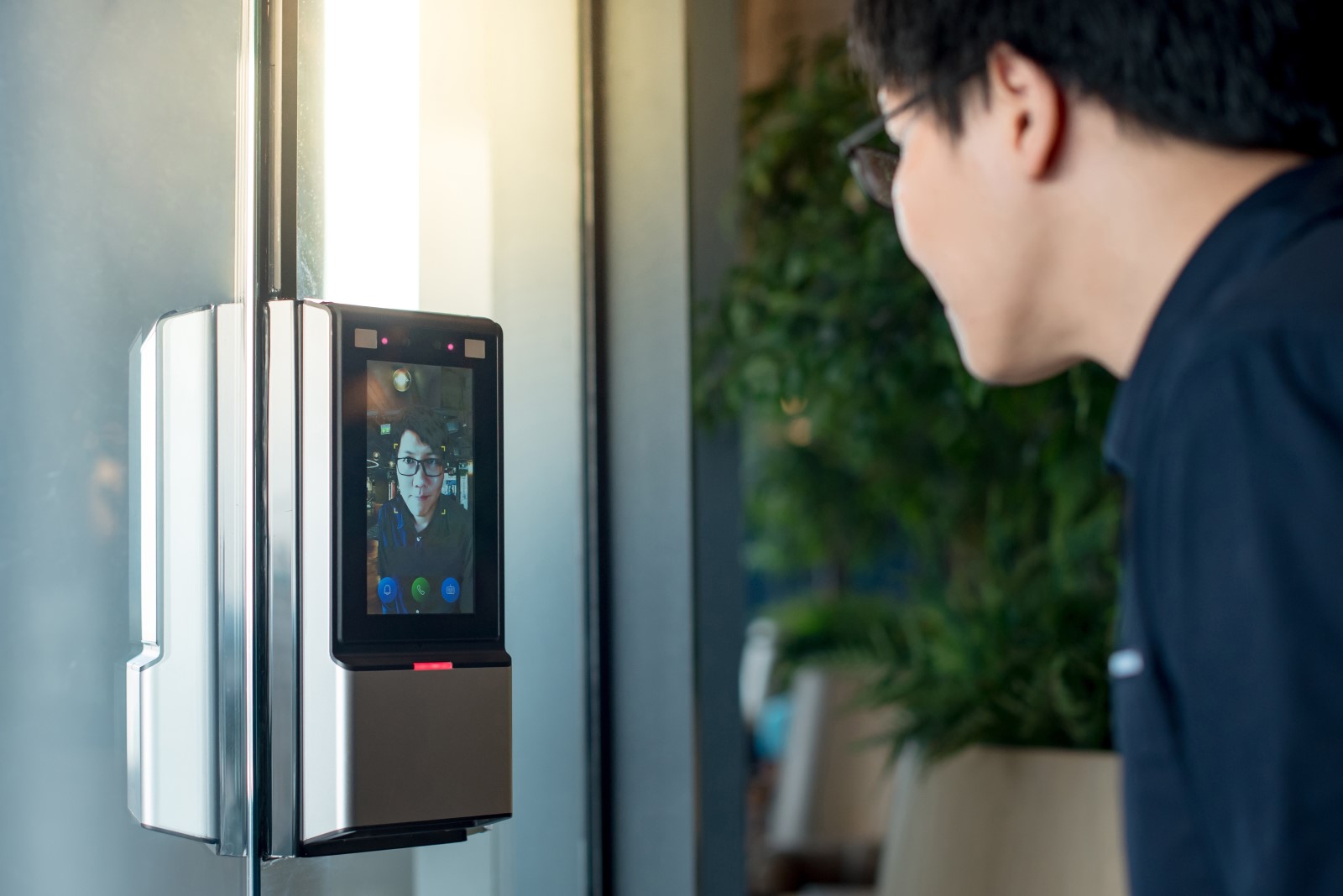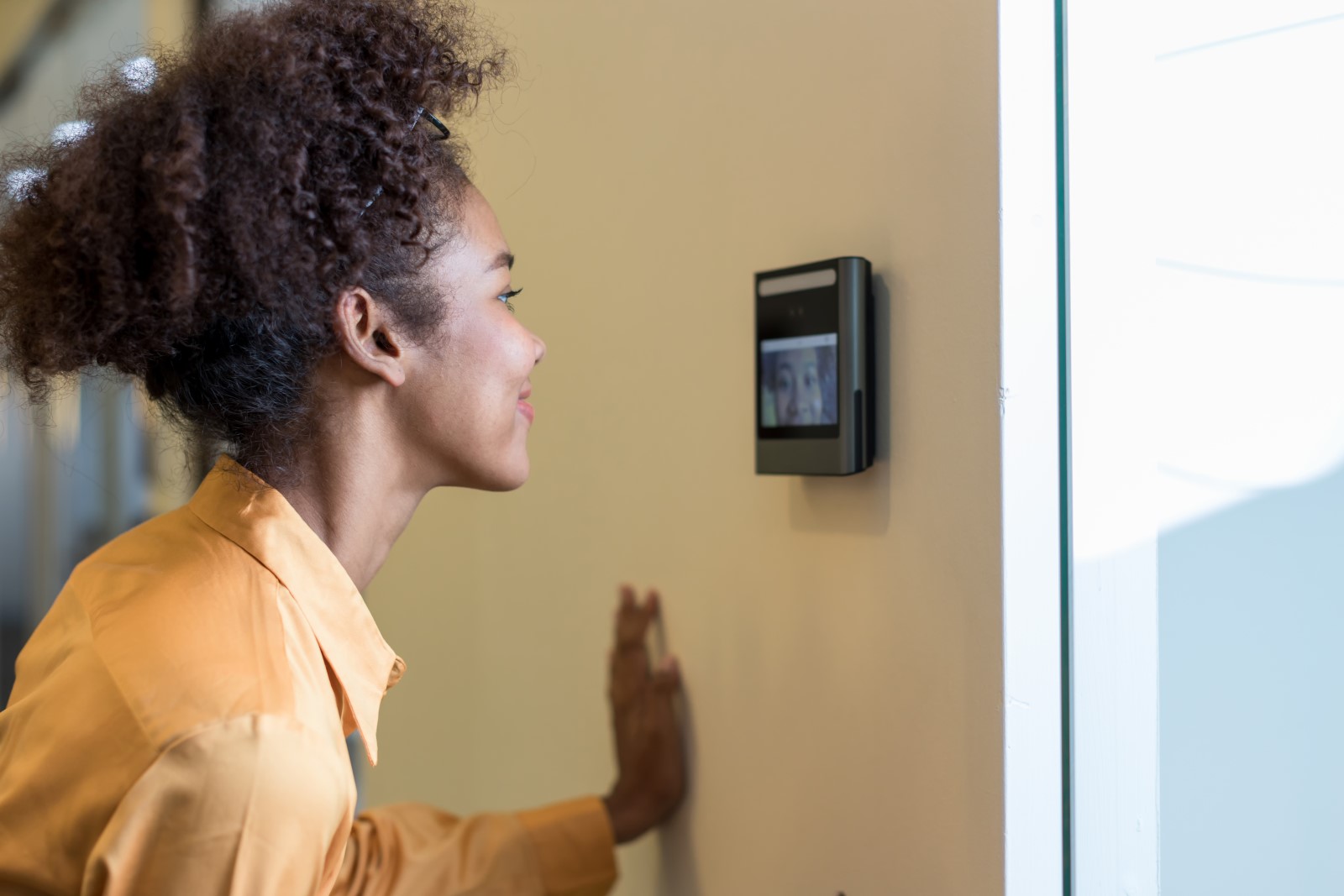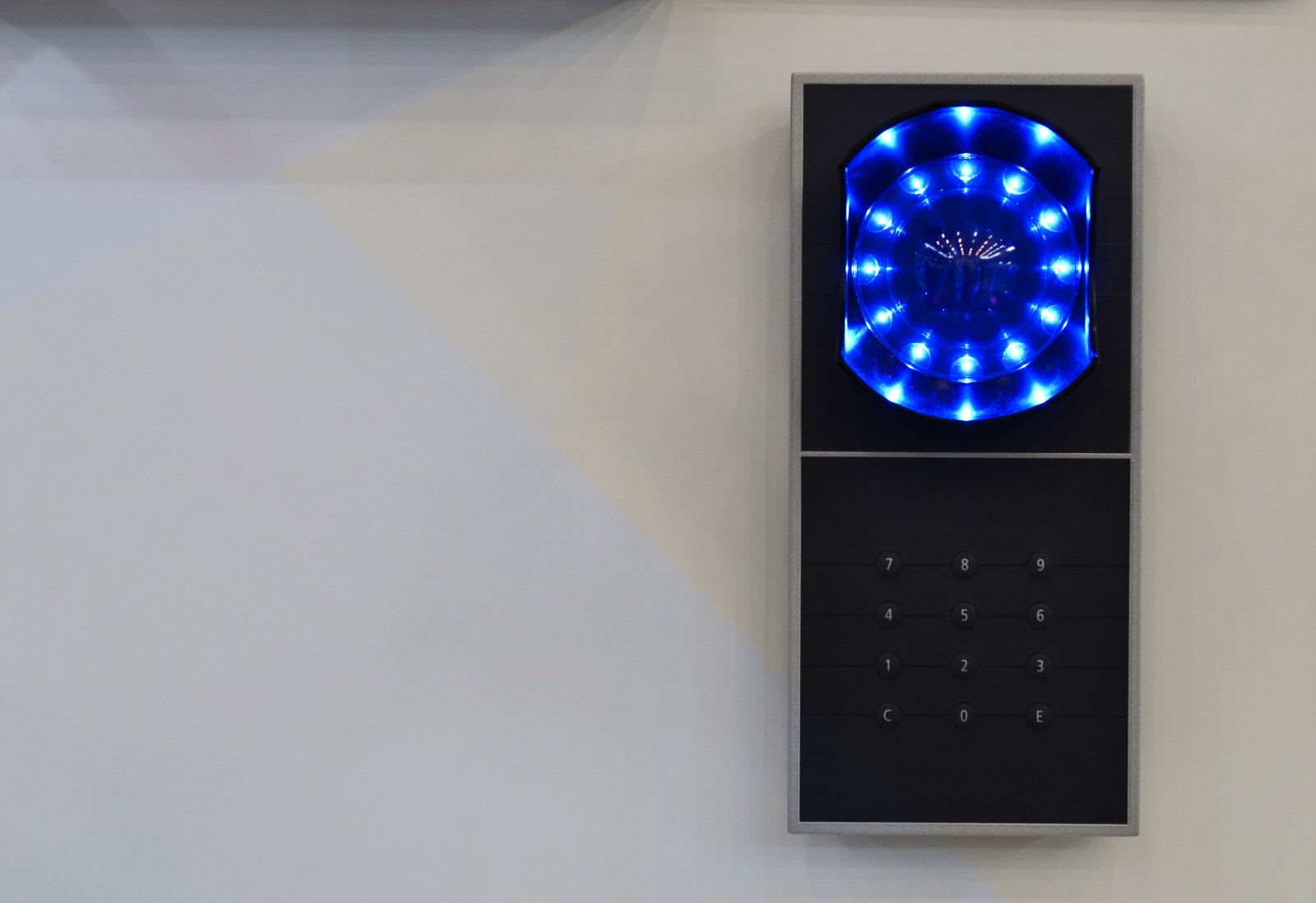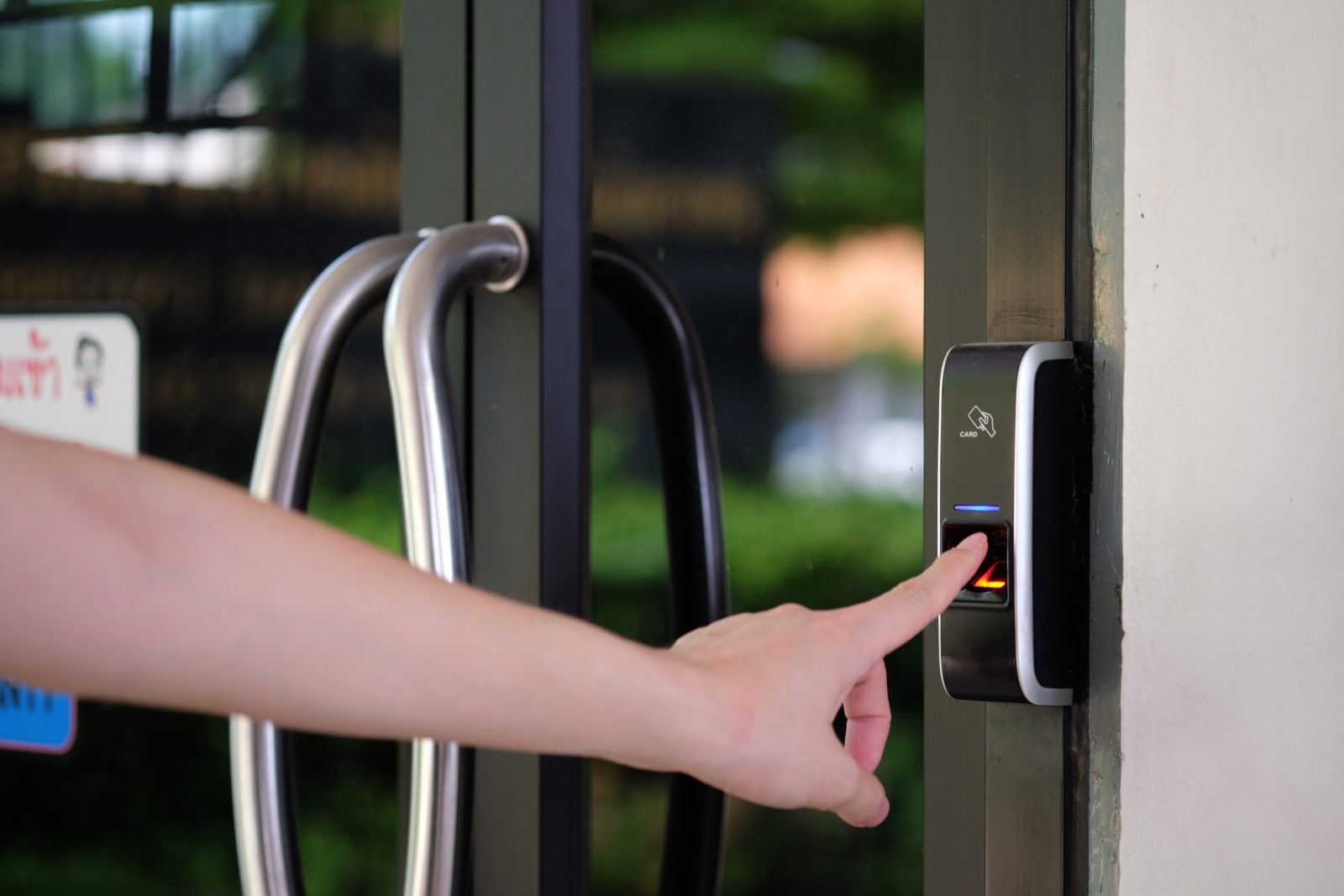How a Biometric Access Control System Works

If you think biometric security systems belong only at high-end banks and shadowy research labs, think again. Today, biometric access control systems provide effective, affordable, and easy-to-use protection for businesses just like yours.
Let’s take a closer look at this increasingly accessible security technology, and how it can help you protect your employees and the critical assets your company depends on.
MAKING SECURITY PERSONAL: BIOMETRIC ACCESS CONTROL
Expanding premises, adding new products, and a growing workforce all add to your security footprint. But one of the most critical security measures is controlling access to your premises because this is the first line of defense against serious dangers like property and data theft, vandalism, or even harm to your staff.
In fact, many business owners are surprised by the time and expense involved in installing, managing, and maintaining “tried and true” access solutions like passcodes, cards, and keys.
But what’s the alternative? Let’s take a closer look at biometric access control systems, how they work, and the specific benefits (and potential drawbacks) they might offer your business.
WHAT IS BIOMETRIC ACCESS CONTROL?
Biometric access control systems use unique physical characteristics like fingerprints, facial features, or iris patterns to identify and authenticate anyone seeking to access your premises.
By using these unique characteristics to verify individuals, biometric systems can control access based on who you are, rather than something you may have, like a card or key, or something you know—like a password. This makes biometric systems far more secure and efficient than more traditional access control technologies.
HOW DOES IT WORK?
Biometric systems gather unique information from anyone seeking access to a secured area or resource and compare it to a database of biometric information gathered from authorized users. If a match is found, the individual is verified and granted access.
Uniquely identifiable data—such as a fingerprint, facial, or iris scan—must be collected from every user. Once on file, this information is highly stable, secure, and efficient to store and use.
Best of all, with biometric systems, there are no cards or keys that can be lost and no passwords that can be forgotten or worse yet, shared. Your employees’ identifiable data is always with them and access can be turned on, extended, or turned off with just a keystroke.
WHAT ARE THE BENEFITS OF BIOMETRIC ACCESS CONTROL?
Biometric access control systems offer clear benefits over other access systems, including key, card, and password systems. These include:
- High Security: Biometric data is nearly impossible to forge, steal, share, or lose thereby offering a far higher level of security than other access control technologies.
- Increasingly Affordable: The cost of biometric technologies has fallen sharply in recent years, putting it within reach of any businesses with assets that need to be protected.
- Easy to Use: Fingerprint scanners and facial recognition are simple and quick to use.
- Easy to Maintain: Once up and running, biometric systems require little maintenance, with no need to track and replace cards or keys or change passwords.
- Easy to Scale: Once set up, there are few limits to how many users your biometric system can manage and it’s easy to expand access to new facilities or resources.
- Cost Effective: All these factors mean that biometric systems are surprisingly cost-effective compared to “lower-tech” alternatives. With falling entry costs and fewer ongoing expenses, biometric systems deliver a great return on investment year after year.
ARE THERE DRAWBACKS TO BIOMETRIC ACCESS CONTROL?
That said, there are some potential drawbacks to biometric access control compared with other systems that business owners should be aware of.
- Higher Setup Costs: While costs continue to fall, biometric systems still require a higher initial investment than other technologies, albeit for a far higher level of security.
- Technology Dependence: You may need to train employees, bring on qualified staff, or hire a security company to provide the skills you need to manage your biometric access system.
- Teething Problems: From database setup to poor lighting at access points to scanning larger fingers, biometric systems come with unique challenges, known as teething problems. A reputable security equipment provider will help you iron these out.
- Privacy Concerns: Storing biometric data raises privacy concerns. Users need to consent to data collection and information needs to be ethically stored and managed.
WHAT TYPES OF BIOMETRIC ACCESS CONTROL ARE THERE?
Four types of biometric access control are in widespread use today, with robust equipment and tried-and-true technology.
FACIAL RECOGNITION

Systems that recognize and authenticate users based on unique facial features are advancing rapidly and are in increasingly wide use. These offer a high level of security and are useful in hands-free applications such as clean rooms or medical facilities, although good lighting is required to ensure accurate identification.
IRIS RECOGNITION

Iris recognition offers possibly the highest level of personal verification based on unique patterns in the colors of the eye. That said, iris recognition requires specialized technology and is normally used for very high-security applications in large companies or government agencies.
PALM RECOGNITION

Palm scanning is easy to use and offers a high level of security based on the lines and veins in an individual’s hand. It provides a quicker and more robust alternative to facial recognition in settings where an individual may enter and re-enter a secured area many times during the day.
FINGERPRINT RECOGNITION

Fingerprint verification has emerged as the most versatile and easy-to-use technology for biometric access control. Fingerprint scanning is now widely accepted and offers a high level of security, robust recognition systems, and affordable technology.
And, many fingerprint recognition systems now allow new users to be scanned and registered, or access permissions to be changed, at the point of access.
Fingerprint scanning technology is also now very affordable, making it a viable option for even smaller companies looking to improve their access control systems.
HOW DO FINGERPRINT READERS WORK?
Let’s take a closer look at how fingerprint scanning technology works for access control applications. One of the key advantages is that fingerprints can be both captured and verified using the same scanners.
Once captured, the data is turned into a digital template that is easy to store and access. The template remains very accurate, even though fingerprints may change during a person’s lifetime. It’s also seen as less intrusive by users than other forms of biometric verification.
Access point verification is quick and easy, and makes use of increasingly compact, easy-to-use scanners, some of which can now connect to your system via ethernet or wireless networks.
DOES A FINGERPRINT READER MAKE SENSE FOR YOU?
Fingerprint-based access control makes increasing sense for a wide range of growing businesses. Here’s why:
- Cost-effective: Fingerprint scanning levels up your security at an affordable price.
- Convenient: Verify and grant access, add new users, and adjust access permissions all from the same scanner unit.
- Familiar: Fingerprint scanning is now widely accepted for biometric recognition.
- Scalable: Once your database is set up, it’s easy to add new scanners as required.
- Low running costs: No cards or keys to replace or passcodes to manage.
RICHMOND SECURITY: AFFORDABLE WORKPLACE PROTECTION
As a business owner, you know that keeping your employees safe and protecting your critical infrastructure and assets is non-negotiable. Investing wisely in the right access control equipment can help make sure your security dollar delivers long-term value to your company and people.
Since 1976, Richmond Security has been helping all types of businesses protect what matters most to them. We pride ourselves on our ability to deliver tailored, scalable security solutions that meet your needs and budget today—and to grow with you to protect your assets into the future.
- Our skilled, experienced staff provides customized biometric security solutions and backs them up with ongoing technical support and maintenance services.
- We can also work with you to integrate your access control system, new or existing alarm systems, CCTV systems, and 24/7 off-site monitoring services.
Contact us today for a quote, or click below to learn more about our biometric access control systems.
